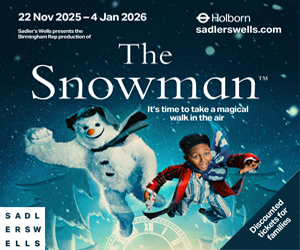Primary Times - the definitive what’s on and where to go family guide of activities and events for children of primary school age. Things to do with your kids during the school holidays including arts and craft activities, music and theatre for children, parties, competitions, days out, and family attractions along with term time drama schools, dance classes, after school clubs and sports activities. Things to do at a place near you!
How to spot the signs of dyslexia in children
 What’s it like to be a child with dyslexia? Many people think dyslexia is just difficulties with spelling or reading, but it’s much more than that. Dyslexic kids have their own unique pattern of strengths as well as challenges, but only 1 in 10 teachers truly understands dyslexic strengths.
What’s it like to be a child with dyslexia? Many people think dyslexia is just difficulties with spelling or reading, but it’s much more than that. Dyslexic kids have their own unique pattern of strengths as well as challenges, but only 1 in 10 teachers truly understands dyslexic strengths.
The key to success for our dyslexic children is to spot and support these strengths early. Let’s take a closer look at what dyslexia is and how parents and teachers can identify it.
What is dyslexia?
Dyslexia is a genetic difference in an individual’s ability to learn and process information. This means that our brains are literally wired differently. As a result, dyslexic children are naturally good at lots of things, but they might find certain tasks in the classroom trickier than their friends do.
Here are 4 amazing skills and strengths associated with Dyslexic Thinking:
1. Imagining
Dyslexic Thinkers are fantastic Imaginers and excel at creating an original piece of work or thinking of new ways of doing things. Dyslexic children love daydreaming, making up games and getting lost in their imagination.
2. Communicating
Dyslexic Thinkers have brilliant communication skills. They are great at explaining things to others in a clear and engaging way through storytelling. Dyslexic children might be elaborate explainers and be very persuasive.
3. Reasoning
Dyslexic Thinkers are analytical, which means they are good at spotting patterns in information, thinking through different possibilities, and solving problems. This ability to unconventionally connect the dots makes dyslexics excellent big-picture thinkers.
4. Exploring
Dyslexics are also ace explorers. They are naturally very curious and explore ideas in a constant and energetic way. Dyslexic children love to know how things are the way they are, they constantly ask “why, why not?”.
6 facts about identifying dyslexia
Early identification helps dyslexic children to focus on their Dyslexic Thinking skills instead of beating themselves up over their challenges. It also enables educators to provide them with a supportive and empowering learning environment.
This is vital because dyslexic children are currently disadvantaged by the way our schools measure intelligence. Education systems prioritise easily tested skills like rote memorisation and recall, spelling, grammar and punctuation. These tests measure Dyslexic Thinkers against the very things they find challenging, rather than giving them the opportunity to showcase their strengths.
But these intelligence measures are outdated. In Made By Dyslexia’s Intelligence 5.0 report, only 6% of respondents believe scoring highly in exams is the best indicator of intelligence. So, parents and schools must learn to recognise dyslexia to help their kids’ strengths flourish.
Here are 6 facts about identifying dyslexia:
1. Dyslexia can be identified at age 5 or earlier, which is when many dyslexic kids show signs.
2. The earlier it is discovered and supported, the sooner dyslexic kids catch up and keep up.
3. Only 1 in 5 dyslexics are identified at school so 80% leave school unidentified.
4. A mismatch in what an individual seems capable of and the written work they produce is a strong indicator of dyslexia.
5. 4 in 5 dyslexics say that knowing they were dyslexic helped them develop the perseverance needed to succeed.
6. Adjustments and accommodations that come with identification are crucial for our success.
How to spot dyslexic strengths
The most important thing we can do for our dyslexic children is to find out what they are extraordinarily good at and are passionate about, and help them to do lots of it, because therein lies the formula for unleashing their Dyslexic Thinking skills.
Here are 5 ways to spot a child’s Dyslexic Strengths:
1. Think about what your child loves to do and would do for hours, if left to their own devices. These are usually their Dyslexic Thinking skills.
2. Find out what they are passionate about, what they love to talk, watch or learn about.
3. Encourage them to do both of the above, lots. Skill + Practice + Passion = Superpower.
4. Easy-to-spot strengths include sport, art, music, dancing. But empathy, kindness, imagining, listening and questioning are all incredibly valuable strengths too.
5. Acknowledge their expertise. Dyslexics often don’t realise how good they are at these things, so may not recognise them as their strengths.
Made by Dyslexia has free training that will help teachers and parents spot dyslexia and enable teachers to create inclusive classrooms where it can thrive. Find out more here: learn.microsoft.com/en-us/training/modules/empower-dyslexic-thinking-schools/.
Kate Griggs is the founder and CEO of the global charity Made By Dyslexia, host of the Lessons in Dyslexic Thinking podcast and the author of Xtraordinary People (a book for young Dyslexic Thinkers) and This is Dyslexia - New Edition (a revised and updated book for adult Dyslexic Thinkers). Discover free training for teachers and parents here.




